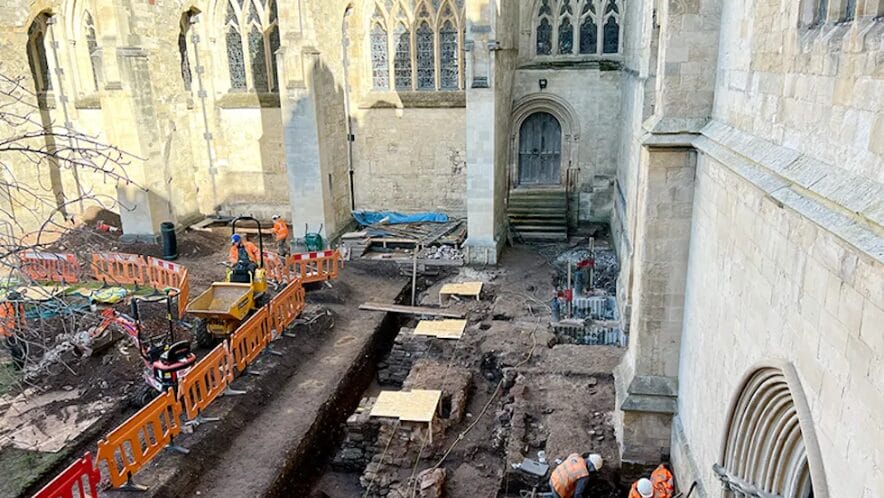
In the historic heart of Exeter, a thrilling discovery not only illuminates the shadows of the past but also kindles the sparks of excitement among history enthusiasts and academics alike. Archaeologists, delving deep beside the grand Exeter Cathedral, have recently unearthed remnants of what was once a bustling Roman legionary fortress, a revelation that dates back to the period between A.D. 50 and 75. These findings, comprising a structured Roman street and vestiges of wooden edifices, provide a tangible connection to the era when Roman legions marked their significant presence across Britain.
This archaeological venture, led by experts from the University of Exeter including the prominent cathedral archaeologist, John Allan, unearthed what is believed to be parts of a long barrack building. The essence of Roman architectural ingenuity breathes through these remnants, offering a rare glimpse into the military prowess and urban planning of the ancient Roman Empire. It was during this era that another significant Roman structure, a bathhouse known as the second stone building in Britain, was constructed nearby in 1971, further highlighting the Roman imperial might and advanced civic amenities.
The historical footprint of Roman legions in Britain, illustrated vividly in the 2018 report by Historic England, points to a critical phase where Britain emerged as one of the most heavily militarized regions of the Roman Empire. These legions, formidable units comprising 5,000 citizen soldiers, were central to the expansion and control strategies of the Romans, weaving a rich tapestry of military and political history that still draws scholars and enthusiasts to its study.
Moreover, the ongoing excavations near the cathedral have also shed light on the remnants of a stone wall, a part of a Roman townhouse from the third and fourth centuries A.D. Echoes from these walls tell tales of the daily lifestyle, administrative operations, and the cultural milieu that pervaded during the later Roman period in Britain.
This archaeological work transcends mere discovery; it is part of a larger, visionary project that involves the construction of a new cloister gallery at the Exeter Cathedral. This modern structure is poised on the historic foundations of the medieval cloisters, tragically demolished in 1656. By reconnecting with the architectural past, this project not only preserves but revitalizes the historical narrative of the region.
Located in a region of Devon County, a territory conquered by the Roman Empire in A.D. 50, Exeter Cathedral stands as a custodian of history. The dominion of Rome may have ended in A.D. 410 with the decline of Roman Britain, but these new findings offer a lens into the vibrant Roman life that once flourished here. Each layer of soil removed brings us closer to understanding the grandeur and everyday realities of a civilization that, although vanished, continues to affect modern life and consciousness.
This exploration into the Roman past does not merely add chapters to our history books; it invigorates the curriculum of academic scholars and provides an enriching depth to the enthusiasts delving into Roman history. From the strategic military tactics, exquisite Roman architecture, to the societal norms that governed daily life, the recent discoveries at Exeter Cathedral provide unprecedented insights into the Roman Empire’s influence, echoing through the annals of history to stir the minds of contemporary society.
Not only does this enrich our comprehension of historical epochs, but it also enhances the cultural heritage, allowing both young and seasoned scholars to visually and intellectually experience the echoes of time. As we stand on the grounds where Romans once marched, the layers of history beneath our feet are a testament to the enduring legacy of the Roman Empire in the tapestry of human civilization.
